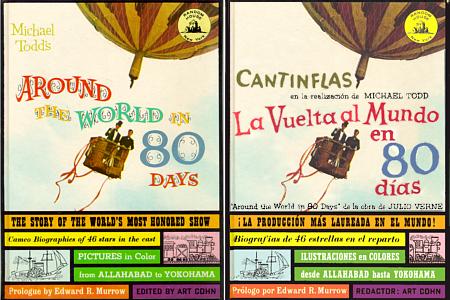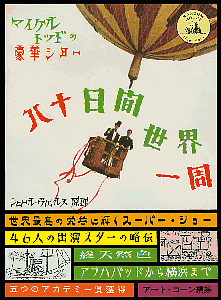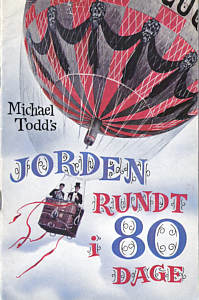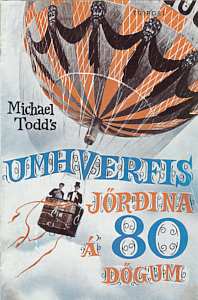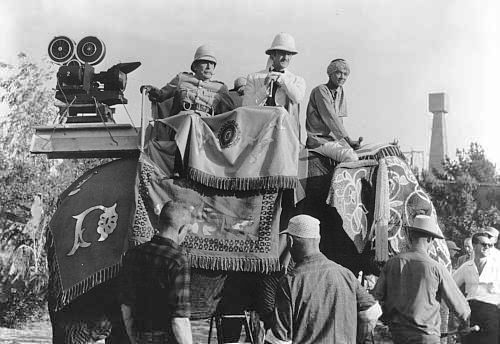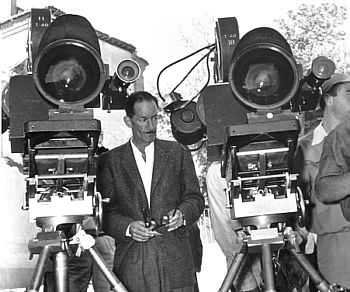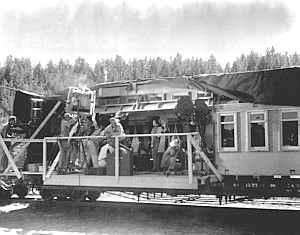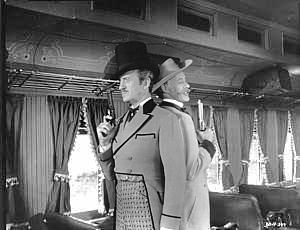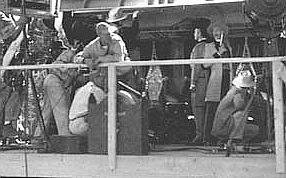|
|
|
|
|
|
|
|
|
|
|
|
70mm Film Finally Makes The Big Time
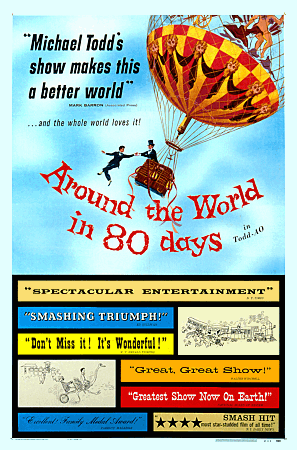
IN TODD-AO
|
Seen at right is a copy of the souvenir book created for the original roadshow presentation. This copy was presented to newspaper columnist Jimmy Starr at the world premiere of the film. Collectors of this sort of memorabilia should note that there are at least three slightly different versions of this book. The second and third printings do not include information on the Todd-AO process. (See below for other versions)
Todd was no man's fool. Mike Todd was widely known to have made and lost many fortunes. While the making of fortunes was something he strived for, their loss was not really a goal. In order to enhance his chances of financial success for Around The World In 80 Days he hired Mexican actor Mario Moreno to play the role of Passaportout. Moreno worked under the name of Cantinflas and was Latin America's most popular film star, though he was virtually unknown in non-Spanish speaking countries. Seen above are two copies of the third version of the 80 Days program book. Mike Todd deferred top billing to Cantinflas, a wise move.
The Around the World in 80 Days juggernaut continued from its premiere in 1956 right into the early 1960s with the film playing at advanced prices worldwide, though Todd-AO installations were late in arriving in Europe but that didn't bother Todd who'd created his special 35mm (and even 34mm) versions to be shown in the roadshow manner. Showmanship was as much a part of Mike Todd's Around the World in 80 Days as was the very film it was printed on. And that showmanship made it a better film than it really was. But the movie was just part of the package. Todd wanted to offer SHOWS, and presentation in a good theatre was a necessary part of the experience.
Other Souvenir Books for Around the World in 80 Days The Random House Japanese edition of the 80 Days program The Danish cover, courtesy of Thomas Hauerslev The not too surprisingly similar Icelandic cover Random House hardcover Swedish version
Japanese and Icelandic covers courtesy of Robert C. Weisgerber. Swedish edition courtesy of Thomas Jönsson
Just because he relented for a minute to let Cantinflas get some glory, and pad his pockets, Todd never gave up on publicity. Rogue was a 1950s Playboy wanna be.
From the AWSM collection
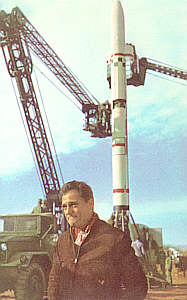
Mike Todd at White Sands, New Mexico, preparing to film the missile launch that concluded the prologue to Around The World In 80 Days. | 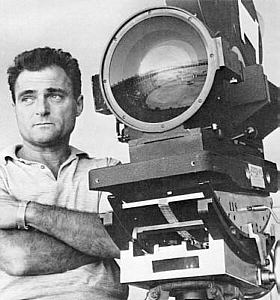
Around The World In 80 Days' storyline
provided exactly what he needed to display the ability of his bugeye lens
to put the viewer into the picture, and he used it frequently in the film.
Todd sold his shares in Cinerama to finance the development of Todd-AO and and then had to sell his interest in the system that bore his name to obtain initial financing for
his film. Mike Todd is seen at left with the bullring reflected in the
bugeye 128 degree lens. While Around The World In 80 Days included an extensive bull fight sequence, see photo left, and similar photos showing a bull ring reflected in the bugeye lens, was actually made when Todd was in Europe shooting demo footage to get Todd-AO off the ground. Oklahoma! filming was well under way in Arizona and at the MGM studios, but the directors of Todd-AO needed a way to get Todd out of the way, and producing a demonstration film was an ideal ploy, especially since it was Todd's idea. A photo similar to this one appeared in Oklahoma! promotional materials that gave Todd credit for conceiving of the new system. |
Precursor to the Steadicam and Panaglide.
An Infestation of BugeyesBoth 24 fps and 30 fps versions are shot simultaneously in Spain. Rather than film two significantly different versions, as was necessary in Oklahoma!, Todd's director of photography, Lionel Lindon, A.S.C., shot both versions in 65mm. In some cases he used two identical Todd-AO cameras and lenses side by side, one running at 30fps for the 70mm version, and the other running at 24fps for the 35mm reduction print, in other cases the same camera was used by changing the camera speed, and in some cases, the material photographed by a single camera was used in both versions, though this could not be done with dialog sequences.
Blue screen, front projection, rear projection, and other similar effects processes were not readily available for the new 65mm system, or they lacked the quality necessary for the improved image resolution and it was necessary to build a special rail car for the interior train shots in the American West sequence.
Production photos courtesy of the most generous Robert C. Weisgerber
Around the World in 80 Days narrative continues on next page
















E-mail the author
CLICK HERE
©1996 - 2012 The American WideScreen Museum
http://www.widescreenmuseum.com
Martin Hart, Curator
